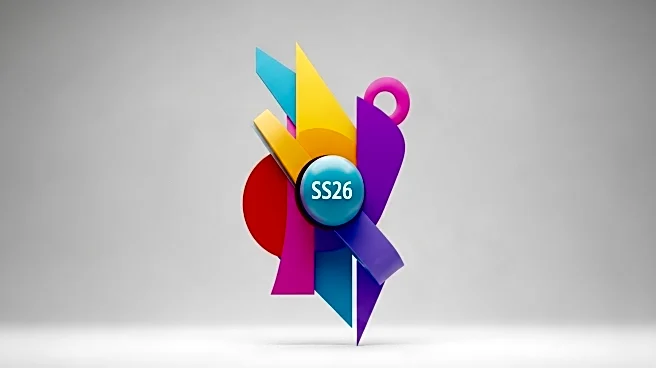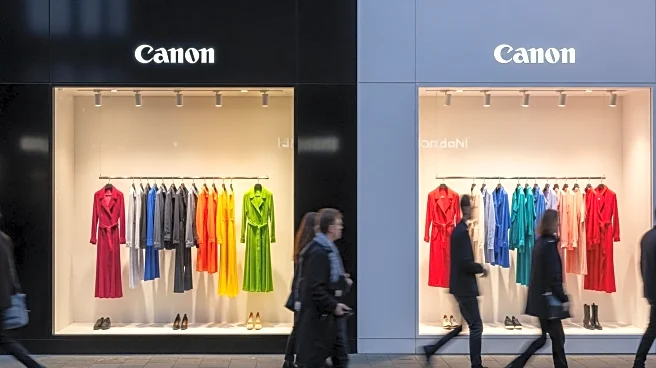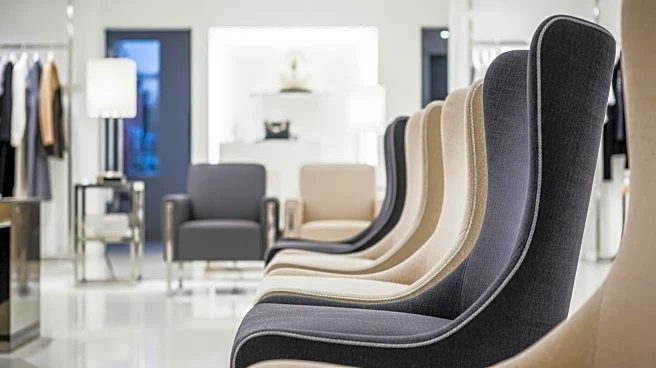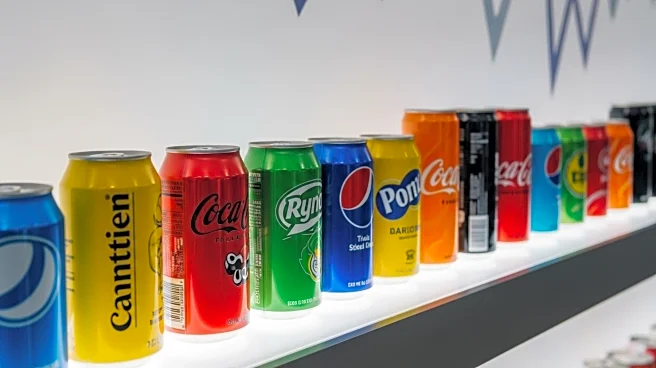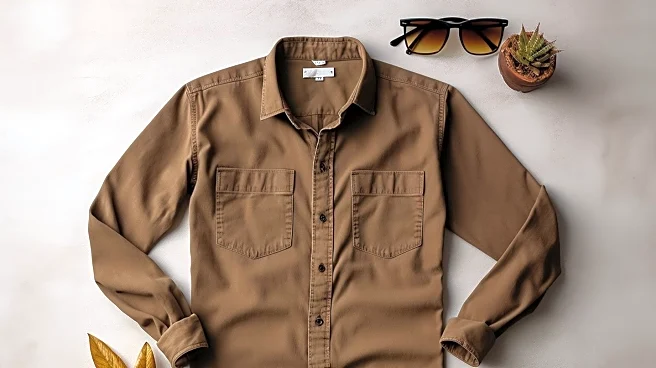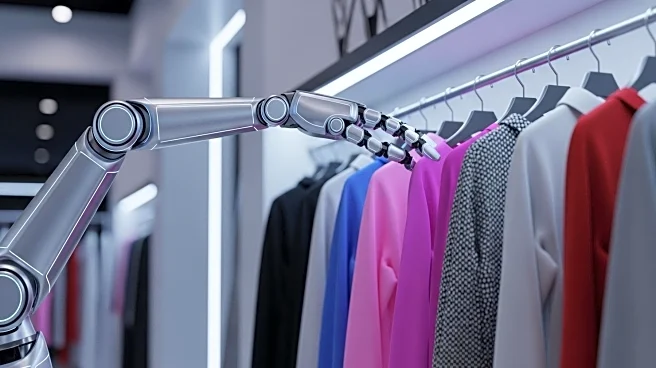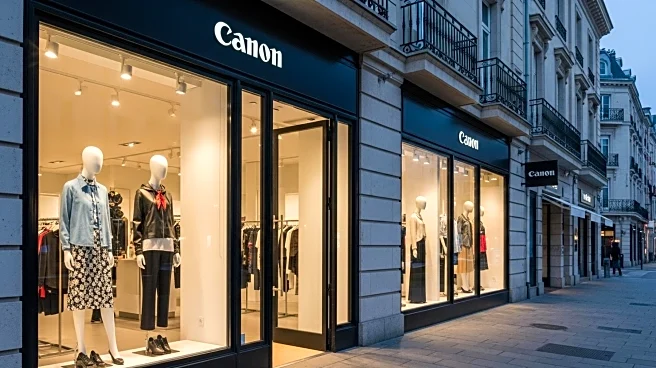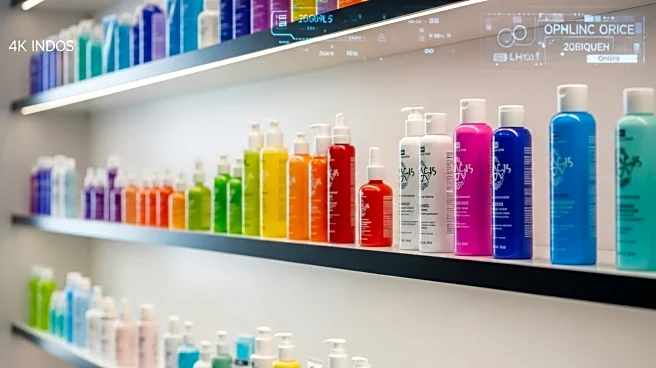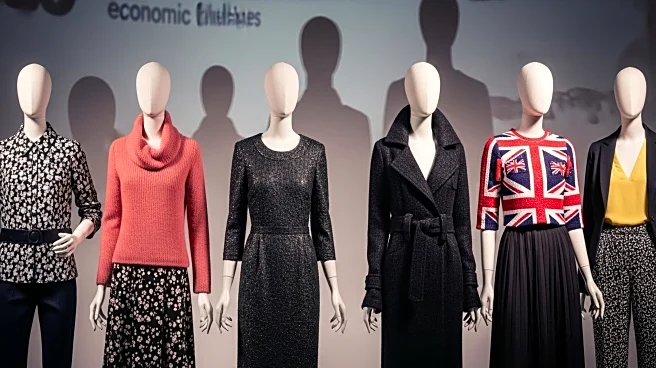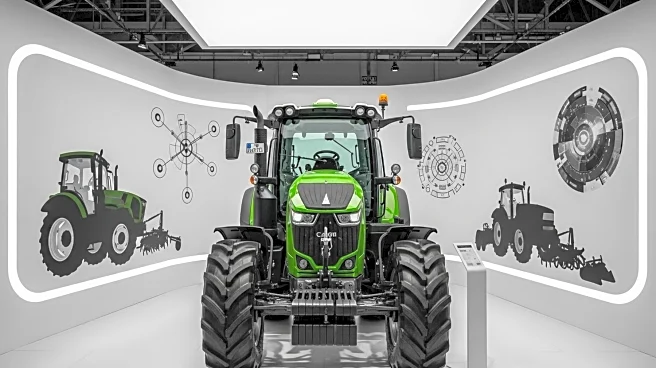What's Happening?
Heuritech, a Parisian AI fashion forecasting company, has analyzed social media images to predict the dominant styles, colors, and fabrics for the spring/summer 2026 season. Among the notable trends identified are purple as the trend color, gaining popularity in both womenswear and menswear, and light yellow emerging as the new neutral. Moccasins and similar footwear are also gaining traction, particularly among women, with a 40% increase in popularity. Animal prints like zebra and dalmatian are rising, with zebra print projected to grow by 17% among U.S. shoppers aged 26 to 35. Romantic fabrics such as lace and satin are expected to see increased interest, reflecting a consumer shift towards feminine silhouettes. Patterns like checks and polka dots are forecast to grow significantly, with gingham expected to rise by 22% among U.S. women.
Why It's Important?
The trends identified by Heuritech have significant implications for the U.S. fashion industry, influencing design choices and consumer preferences. The rise of purple and light yellow as key colors could lead to shifts in retail offerings and marketing strategies. The growing popularity of moccasins and animal prints suggests a change in footwear and apparel design, potentially impacting sales and brand positioning. The emphasis on romantic fabrics and patterns indicates a broader cultural shift towards nostalgia and femininity, which could affect consumer buying behavior and fashion brand strategies. These trends may also influence the production and supply chain decisions of fashion companies, as they adapt to meet evolving consumer demands.
What's Next?
Fashion brands and retailers in the U.S. are likely to respond to these trends by adjusting their product lines and marketing strategies to align with consumer preferences. Designers may incorporate more purple and light yellow into their collections, while footwear brands might expand their offerings of moccasins and similar styles. The increased interest in romantic fabrics and patterns could lead to collaborations with textile manufacturers to produce innovative designs. As these trends gain traction, fashion companies may also explore sustainable practices to meet consumer expectations for eco-friendly products. The industry will closely monitor consumer reactions and sales data to refine their strategies and capitalize on these emerging trends.
Beyond the Headlines
The rise of these fashion trends reflects broader cultural and societal shifts, including a growing interest in individuality, nostalgia, and sustainability. The emphasis on romantic fabrics and patterns suggests a desire for more expressive and personal styles, while the popularity of moccasins and animal prints indicates a move towards comfort and practicality. These trends may also influence other sectors, such as interior design and lifestyle products, as consumers seek cohesive aesthetics across different aspects of their lives. The fashion industry's response to these trends could drive innovation and creativity, leading to new opportunities for designers and brands.
